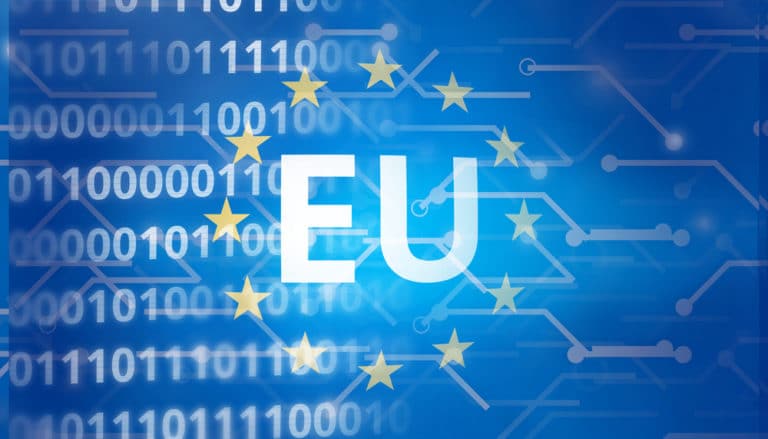The EU Member States are well on track with their digital transformation. Nevertheless, there is still room for improvement in many areas, according to the European Commission’s Digital Economy and Society Index (DESI) report of 2022. Finland, Denmark and the Netherlands are the top three most digitally advanced Member States in the European Union.
The areas examined are the state of digital skills of EU residents, the state of broadband connectivity, the integration of new digital technologies and the extent to which the Member States have put their digital administrations in order to increase opportunities for public authorities and citizens.
Progress continues
The EC concludes in the 2022 edition that digitalization within the member states continues to increase. During the pandemic, this digitization, for instance, through increased remote working and e-commerce, already significantly boosted most Member States. The growth continues steadily. However, in all surveyed areas, there are still a lot of issues to be resolved for the EU 2030 targets.

The ten Member States with the best digital transition are Finland, Denmark, the Netherlands, Sweden, Ireland, Malta, Spain, Luxembourg, Estonia and Austria.
The ten Member states with the worst digital process are Italy, Czech Republic, Cyprus, Croatia, Hungary, Slovakia, Poland, Greece, Bulgaria and Romania.
Digital skills need improvement
When we look at the first research area, the digital skills of EU residents, we see that also in 2022, there is still a lot of work to be done. Only 54 percent of EU residents have basic digital skills, which is 26 percent less than the target the EU has set for this year. In some countries, the percentage is higher, at 79%, such as Finland and the Netherlands. However, in eight Member States, such as Romania, Bulgaria, Poland and Italy, it is below 50%.

The number of IT experts employed is also still disappointing. Across the EU this year, there are 8.9 million IT workers (4.9 percent of the total workforce). While this percentage is growing, it is still below the 10 percent target the EU set for 2030. Sweden and Finland have the highest rate of IT workers in the workforce, with 8 and 7 percent of the total, respectively.
Differences in digital connectivity
In terms of digital connectivity, expanding access to broadband services (fixed and mobile) continues steadily. Leaders are Denmark, the Netherlands and Spain. Lagging behind are Poland, Estonia and Belgium.
Access to broadband internet is possible throughout the EU. By now, 78 percent of all European households have a broadband connection. However, there are big differences when it comes to ultra-fast broadband connections. Only 70% of all European households have access to these specific connections. There are significant differences between the frontrunners, Malta, Luxembourg, Denmark, Spain, Latvia, Netherlands and Portugal, and lagging countries such as Greece.

In terms of mobile broadband connections, the figures also look good. Around 87% of all EU residents currently have a mobile broadband connection. However, the EC has reservations about the rollout of 5G, one of the priorities of the Digital Agenda for 2030. The rollout of 5G in the EU is now at 66 percent but still encounters resistance from non-implemented regulations. Among other things, the EU lags with the auction of the 5G spectrum, which slows down the rollout.
Also, operators can do more with spectrum sharing; this only happens for 4G and 700 MHz spectrum. It inhibits the rollout of advanced applications and leads to a failure to fully exploit 5G in general and the services that this technology can bring.
Digital transformation of businesses
The overall progress of the digital transformation of businesses in the 27 Member States continues at a steady pace. Leading are companies in Finland, Denmark and Sweden and the Netherlands. Lagging are Hungary, Bulgaria, Romania and Poland.
However, the EC has noticed that companies, even in the top countries, the use of advanced technology is lagging. This mainly concerns technologies such as cloud computing, AI and big data.

The study also finds a big difference in the digital development of large companies and SMBs. Not only in terms of advanced technologies but also with basic and essential digital solutions such as ERP and e-commerce.

Digital governments
The EU Member States are working hard to offer a fully digital government by 2030. In 2022, there is a significant difference between the individual member states regarding the status of digital public services. The frontrunners in this field are unmistakably Estonia, Finland, Malta and the Netherlands. The real laggards in this area are Slovakia, Bulgaria, Greece and, again, Romania.

If we look at well-functioning digital public services, which is different from simply offering public services. The frontrunners are Malta, Luxembourg and Estonia. The laggards here are Cyprus, Greece and again Romania.
Use of financial incentives
Last but not least, the European Union also looked at how member states use European financial regulations to stimulate the digital transition. In particular, this concerns the EU’s Recovery and Resilience Facility (RRF). EUR 490 billion has been made available for the approved plans of 25 Member States. Of this, EUR 325 billion is provided in grants and EUR 165 billion in loans. Only the plans of Hungary and the Netherlands still have to be approved.
Of all 27 Member States, 21 have already started implementing the plans and received money for this purpose. This concerns EUR 67.02 billion in grants and EUR 33.37 billion in loans.
Goals are still far away
The EU is making progress in digitalizing the economy and society, but a lot of work needs to be done as well. Some goals even look out of reach at this stage. There are still 7,5 years to go, in which some Member States need to pick up the pace.
